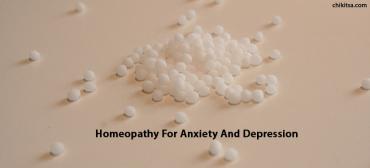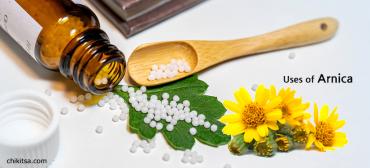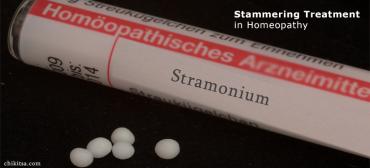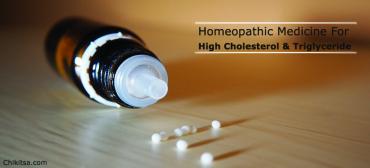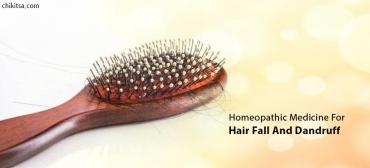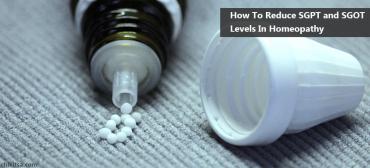Best Homeopathic Remedies For Sinus Infection

Sinuses are hollow air spaces in the skull. Sinuses belong to the upper respiratory tract. Sinuses are present bilaterally in a normal individual. They are nasal and para-nasal. Para-nasal sinuses develop as an outgrowth to the nasal cavities. Para-nasal sinuses are:
- Frontal Sinus - Located above the eyebrows.
- Ethmoidal – Located on sides on the nose, near the eye
- Maxillary – Below the eyes and above the upper molar teeth
- Sphenoid – Behind the nasal cavity, just below the pituitary gland
The basic function of bones is the protection of organs inside the body. Similarly, these sinuses have a protective role against trauma and infection. All these sinuses are connected with the nasal cavity to enable effective drainage and airway. The work of sinuses is mucus production to moisturize the nasal cavity. Mucus is responsible for trapping dust and micro-organisms. Hair-like projections called Cilia work with mucus production in pushing these trapped particles into the throat where they can be coughed up or swallowed.
What is Sinusitis?
Infection of one or more para-nasal sinuses is called Sinusitis. This may be acute, sub-acute, chronic or recurrent. Maxillary sinuses are commonly affected due to close proximity from the mouth and nose. Infection of other para-nasal sinuses is equally possible. When all sinuses are involved, the condition is called Pan Sinusitis.
Acute sinusitis
Acute sinusitis is an infection of the paranasal sinuses with symptoms present for more than 4 weeks or 10 days.
Causes of Acute Sinus Infection Are
- Upper Respiratory Tract Infections such as rhinitis, tonsillitis or adenoids increase the risk of developing a sinus infection.
- Dental infection especially of molars commonly results in maxillary sinusitis.
- Trauma to the face or head.
- Chronic lung infections may cause acute attacks of sinusitis.
Causative Organisms Responsible For Sinus Infection Are
- Streptococcus
- Staphylococcus
- Pneumococcus
- H. Influenzae
- Moxarella Catarrhalis
Viral sinusitis is relatively self-limiting and the patient recovers within 7 days. However, bacterial sinusitis tends to become persistent. About 0.5-2% cases of viral sinusitis become bacterial. It is quite difficult to differentiate between bacterial and viral sinusitis.
Signs and Symptoms of Acute Sinus Infection
1. High grade fever with chills is generally present in a bacterial infection.2. Pain in different sinus involvement is:
- Frontal Sinus – Headache above the eyes, worse on waking up and subsides throughout the day as the sinus drains.
- Ethmoidal Sinus – Pain at the bridge of the nose and near the inner part of the eyes.
- Maxillary Sinus - Pain at cheeks below the eyes. Pain is worse from stooping.
- Sphenoid Sinus – Pain is either at the vertex of the head or at the base.
3. Occasionally swelling and redness above the affected sinuses are often seen
4. Post-Nasal drip of clear white or purulent mucus
5. Tenderness on applying pressure is usually present
6. Body ache and malaise
7. Change in tone of voice
8. Nasal turbinates appear red and congested
9. X-ray of paranasal sinuses shows infected sinus with the presence of fluid level and haziness
Untreated cases of sinusitis can lead to secondary complications such as pneumonia, bronchitis or ear infection. Sphenoid sinus involvement increases the risk of individuals developing meningitis.
Chronic Sinusitis
Causes of chronic sinus infection are- Chronic form of sinus infection occurs due to incompletely resolved the acute infection. The maxillary sinus is commonly involved.
- Tooth or gum infections
- Recurrent attacks of common cold
- Mucociliary Dysfunction
- Some structural abnormalities like Deviated Nasal Septum (DNS), nasal polyps or tumors of the nasal cavity increases the incidence of sinus infection in such patients
- Immotile cilia syndrome results in inadequate drainage of sinuses. Offending particles or organisms tend to stay within the sinuses resulting infection.
- In immune-compromised patients, a fungal infection of sinus is usually seen.
Signs and Symptoms of Chronic Sinusitis
- Post-nasal drip of mucus is often present. This makes the patient clear his throat often, resulting in a cough
- Nasal obstruction due to structural deformities
- Changes in smell perception may occur
- Headache occasionally
- Nose bleed is a rare symptom
Is Sinus Infection Contagious?
Yes. Sinusitis is caused by a wide variety of organisms which are spread from one person to another by droplet infection, which is, by coughing, sneezing or sharing of same utensils, food or water. Viral sinus infection is most contagious as viruses tend to remain on surfaces for long periods. Some even become resistant to cleaning and disinfection.
Sinus Infection During Pregnancy
During pregnancy, a woman is most susceptible to acquiring infections. Sinusitis can develop at any trimester of pregnancy.
During pregnancy, symptoms such as high grade fever, headache at the base of the skull, purulent nasal discharge or nose bleed should not be ignored. Immediate physician consultation should be sought as bacterial or viral infections can also travel through the placenta and affect the fetus.
Limit contact with infected individuals and avoid going to over-crowded places during pregnancy. Such situations increase the risk of developing infections.
Management of Sinus Infection
A lot of anti-viral drugs, antibiotics, expectorants, cough suppressants and decongestants have been in practice for quite a long time. In spite of this long list of treatment options, patients in the recent past have been seeking homoeopathic treatment for managing both acute and chronic sinus infections.
Homoeopathy on the other hand, focuses on symptoms of the patient and its causative factors. No homoeopathic remedy will act to suppress any symptom, be it mucus production or a cough. The reason being, these symptoms are considered to be natural expressions of the individual.
Acute sinus infections are treated based on symptoms whereas, chronic sinus infections are often managed using “Constitutional Approachâ€. Structural abnormalities, however, need to be corrected surgically.
Top Homoeopathic Remedies For Sinus Infection
1. Hepar Sulphur
Boring pain at root of nose. Stoppage of the nose from exposure to cold air. Almost all complaints are worse from cold air. Sneezing followed by watery nasal discharge and yellowish-green mucus later. Nasal discharge has an offensive smell.
2. Kali Bichrom
Headache over the eyebrows. Tough, stringy nasal discharge. Sinus infection due to nasal polyps. Fullness and aching at the root of the nose. Chronic and acute inflammation of frontal sinuses. Dropping from posterior nares. Unable to breathe from the nose.
3. Kali Iodatum
The stuffiness of nose. Infection of the frontal sinus. Effective in chronic ailments even when symptoms do not match. Profuse, watery nasal discharge associated with frontal sinus.
4. Pulsatilla
Pain in frontal region of the forehead and above eyebrows. Stoppage of nostrils. Pain at root of nose. Complaints are better in the open air. Thick, yellow-green discharge from the nose. Infection of the frontal sinus.
5. Mercurius
Aching type of pain in facial bones. Catarrhal affections. Sneezing from exposure to the sun. Yellow-green, fetid, pus-like discharge. Nose symptoms get worse in damp weather. There are pain and swelling of nasal bones. Involvement of frontal, maxillary and ethmoidal sinuses.
6. Silicea
Complaints after being vaccinated. Pain at the base of the skull. Swelling at the root of the nose. Nose block with loss of smell. Sneezing worse in the morning. This remedy is useful when there is infection with pus formation. Infection of the sphenoid sinus.
7. Spigelia
Pain below the eyebrows and at temple region. Pain commonly over the left eye. Infection of the frontal sinus. The chronic catarrhal affection of sinuses. Post-nasal mucus discharge is present.
8. Ammonium Carb
This remedy works well in individuals having a sedentary lifestyle and those who are slow to react. The remedy has a good role in managing infections of the respiratory tract. Pulsating pain in forehead, better from applying pressure. Discharge of watery coryza which burns. Unable to breathe through the nose.
9. Teucrium
Nasal polyps. Indicated for chronic catarrhal infections of the nasal cavity and sinuses. Infection of the frontal sinus. Pain in frontal region of head which is worse from stooping. Nose block followed by watery nasal discharge.
10. Lycopodium
Pain at the base of skull and vertex, worse from lying down or stooping. Pain in the head above the eyes from cold exposure. A headache better from open air. Infection of sphenoid and frontal sinuses. Increased sense of smell. Nose block. This remedy works well when complaints are associated with digestive disturbances.
11. Sanguinaria
One of the most effective remedies in the management of Upper Respiratory Tract Infections. Infection of the sphenoid sinus. Pain in the head at occiput (base of skull) spreading over the head and settles over the right eye. Cough due to influenza. Nasal polyps.
Apart from these single remedies, certain homoeopathic pharmacies have also come up with newer formulations which involve the use of more than one remedy in the form of dilutions. It is essential to consult a qualified homoeopath in order to receive the best treatment.
Controlled clinical trials and research papers in homoeopathy show a positive role of homoeopathic remedies in the management of both acute and chronic sinus infection. Homoeopathic remedies are not only natural ways to treat a sinus infection. These remedies also help in preventing repeated attacks of a sinus infection.
Additional Measures To Manage Sinus Infection
- Bed rest in acute attacks.
- Steam inhalation relieves nose block symptoms.
- Sleep with an additional pillow under your head to allow drainage of sinuses.
- Warm water gargles reduce congestion and soreness of throat
- Identify triggering factors and try to avoid those.
- Avoid close contact or sharing of food and drinks with infected individuals.


